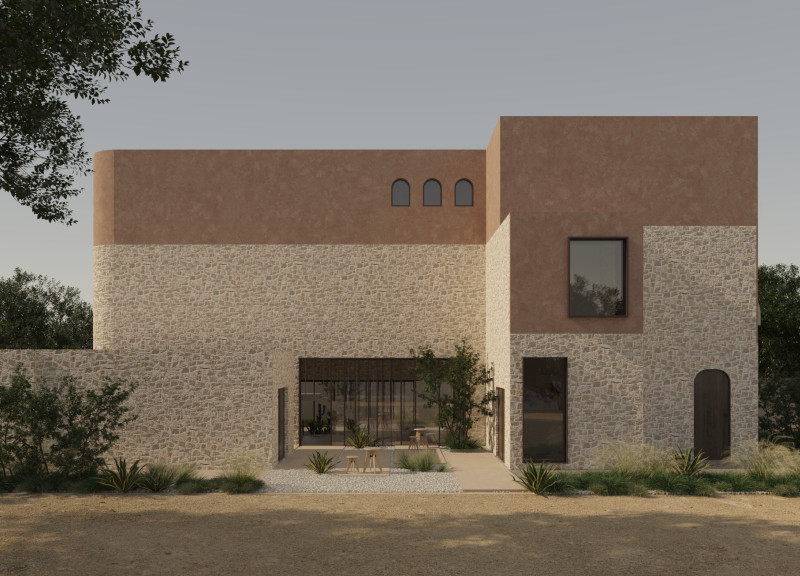5 key facts about this project
At its core, the project embodies a multifunctional space that seeks to serve the local community while also meeting the specific needs of its intended users. This has been achieved through meticulous planning and design strategies that prioritize user experience. The architectural design integrates indoor and outdoor spaces seamlessly, allowing for fluid movement and interaction while encouraging occupants to engage with nature. Expansive windows and strategically placed openings frame views of the surrounding landscape, creating a sense of connection to the environment that is often missing in urban settings.
The use of materials is particularly noteworthy in this project. A combination of locally sourced stone, timber, and glass contributes to a sense of cohesiveness with the surroundings. The stone provides a robust foundation, echoing the geological attributes of the site, while the timber elements bring warmth and texture to the façade. Glass panels not only serve practical purposes, allowing natural light to flood interior spaces, but also provide transparency, inviting visitors to experience the dynamic interplay between the indoor settings and the external environment. This selection of materials reflects a careful consideration of sustainability and durability, positioning the project as a responsible addition to the architectural landscape.
The unique design approach taken in this project is characterized by its responsiveness to environmental factors. The architectural design thoughtfully considers the climate, topography, and local biodiversity. Passive design strategies are evident, as the building maximizes solar gain in winter while utilizing shading techniques during the summer months. By incorporating green roofs and rainwater harvesting systems, the project demonstrates a commitment to ecological preservation and resource efficiency. This foresight not only enhances the building's performance but also aligns with contemporary trends in sustainable architecture, contributing positively to the discourse surrounding environmental responsibility.
Another distinctive aspect is how the layout encourages community interaction. Open public spaces are interspersed throughout the design, fostering social connectivity among users. These communal areas, designed for versatility, can accommodate various activities—ranging from informal gatherings to organized events—thus promoting a vibrant community life. This thoughtful integration of social spaces illustrates an understanding of the importance of architecture as a facilitator of human interaction and community building.
Attention to detail is evident in various elements of the project. Finishes have been selected to complement the overarching design ethos, from the smooth textures of the polished concrete floors that provide a contemporary feel, to the handcrafted wooden accents that imbue warmth and a sense of craftsmanship. Lighting design has also been carefully considered, with a mix of natural and artificial lighting strategies aimed at enhancing mood and functionality throughout the day.
The architectural plans reflect an organized, methodical approach to space allocation that balances private areas with open community spaces, emphasizing accessibility and adaptability. Architectural sections provide a clear understanding of the spatial relationships within the building, illustrating how vertical circulation aids in navigating between levels while maintaining visual connections.
In reflecting on this project, it is clear that it is a well-conceived example of how architecture can serve both aesthetic and functional purposes. The design not only meets the immediate needs of its users but also demonstrates a broader vision for community-oriented spaces that promote sustainability and environmental integrity. The careful selection of materials, the integration of natural elements, and the focus on human interaction all contribute to a holistic architectural approach.
For those interested in a deeper dive, exploring the architectural details such as the architectural plans, architectural sections, architectural designs, and the overarching architectural ideas will provide further insights into the thought processes that shaped this remarkable project. The balance of form, function, and community engagement stands as a testament to the potential of architecture to enhance lives and foster connections within a shared space.


























